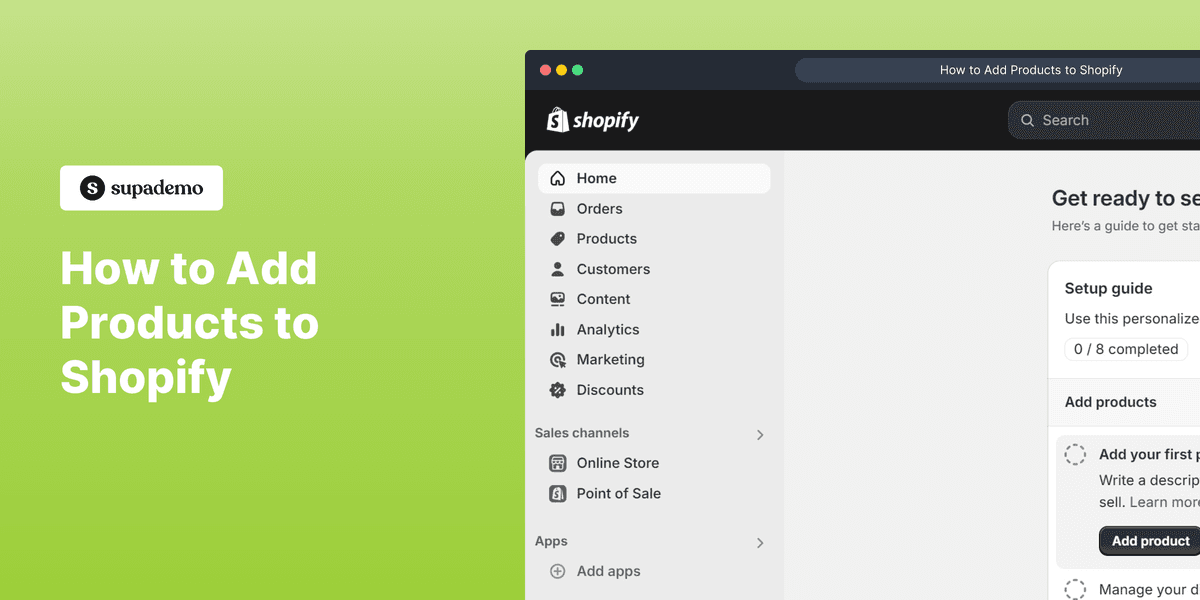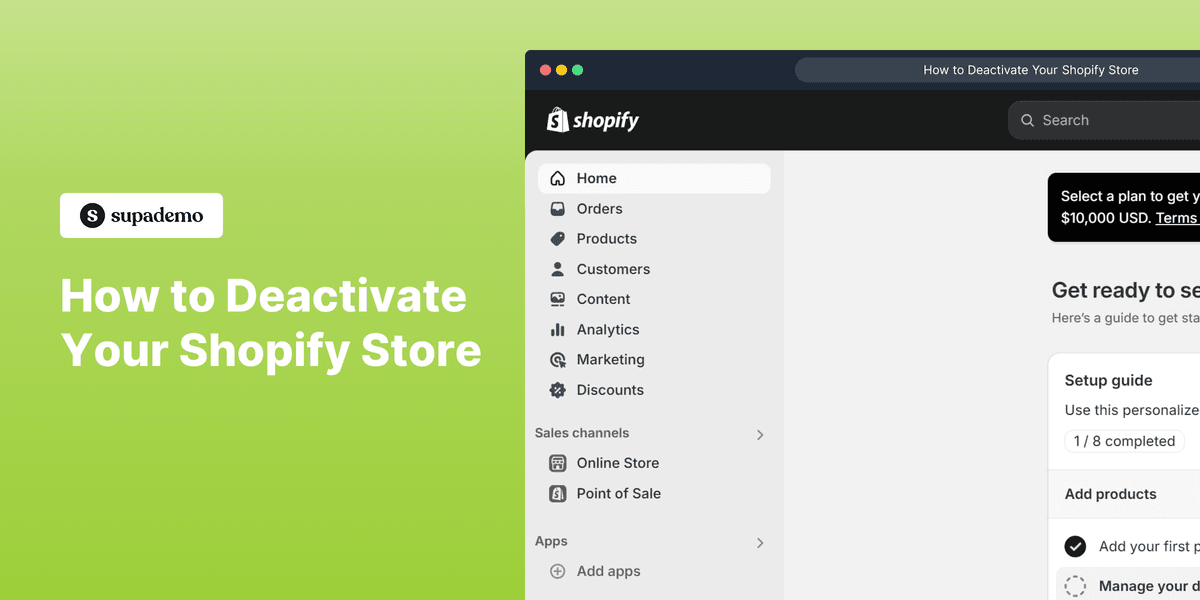
Overview:
Enhance your writing process with the SEMRush SEO Writing Assistant Tool by optimizing content for search engines. Organize and refine your articles with valuable suggestions, improving readability and SEO performance. This guide offers a seamless walkthrough, empowering you to effectively utilize the SEMRush SEO Writing Assistant Tool for enhanced writing efficiency and search engine visibility.
Who is SEMrush best suited for?
SEMrush is best suited for a wide range of professionals, including SEO Specialists, Digital Marketers, and Content Strategists. For example, SEO Specialists can use SEMrush for conducting keyword research and site audits, Digital Marketers can leverage it for tracking competitor strategies and optimizing campaigns, and Content Strategists can use it for analyzing content performance and identifying growth opportunities, all benefiting from SEMrush’s comprehensive SEO and marketing tools.
How to use the SEMRush seo writing assistant tool
1. Start by selecting Content Marketing
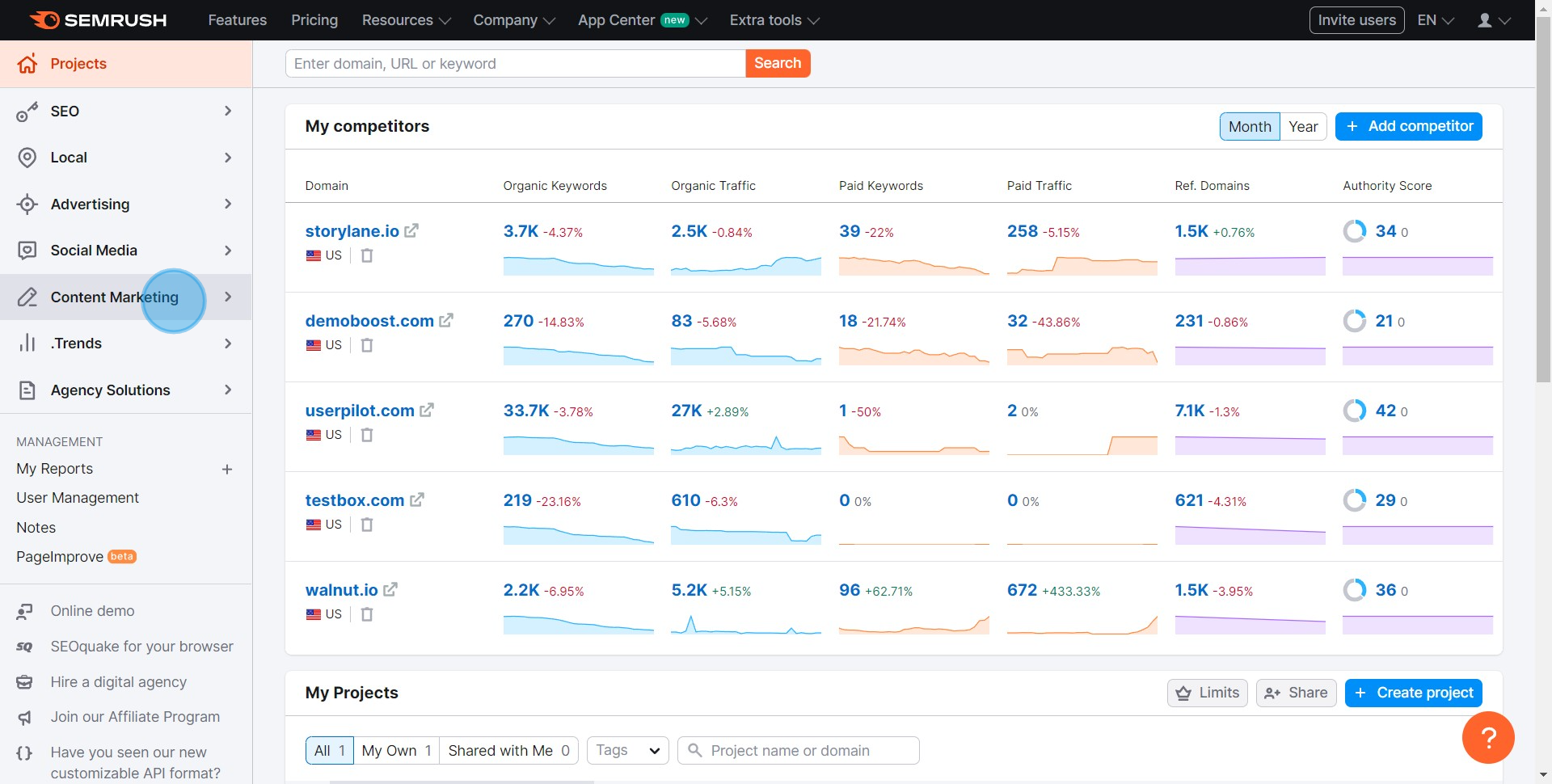
2. Next, choose the SEO Writing Assistant
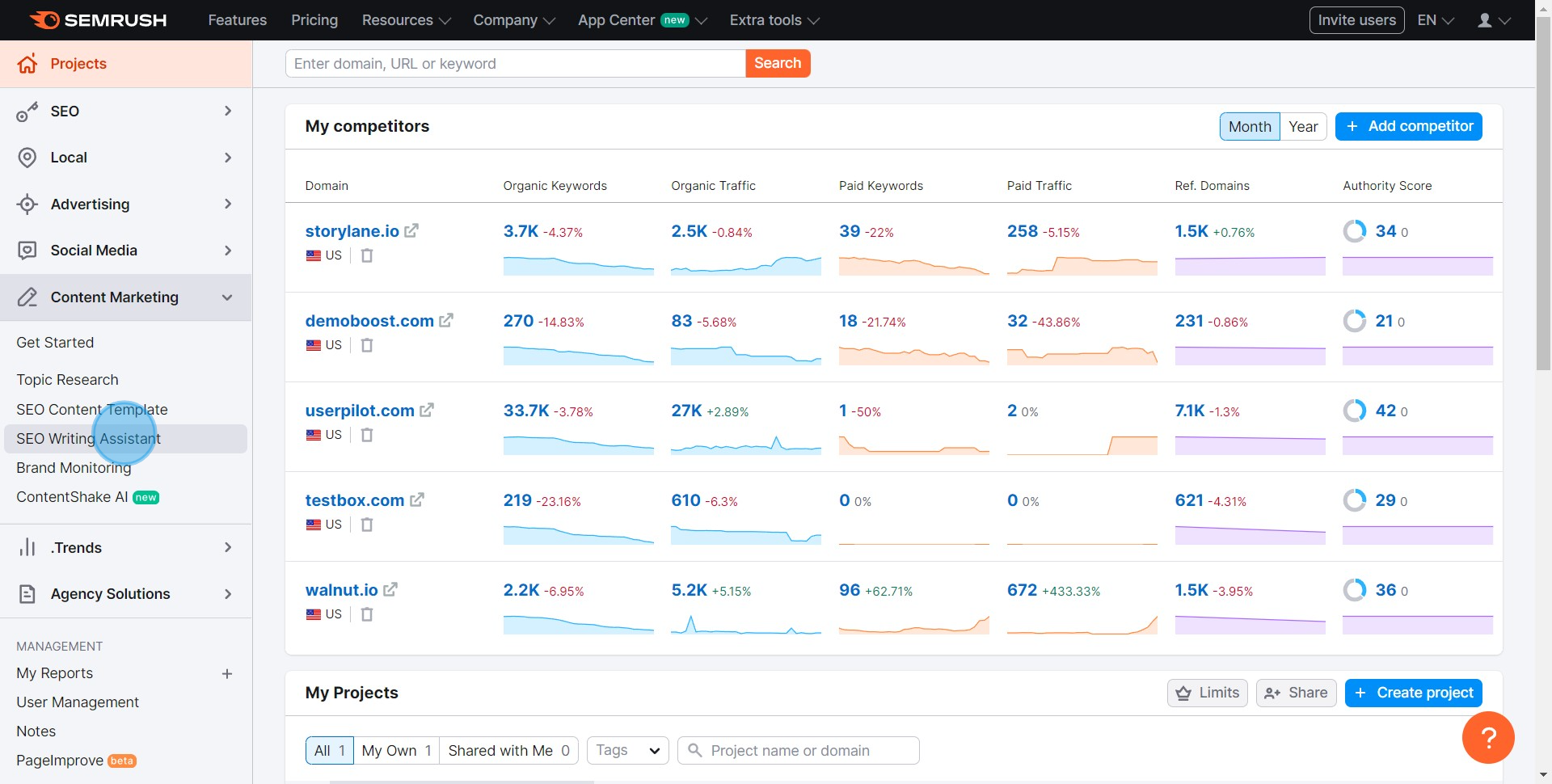
3. Now, click on Analyze new text
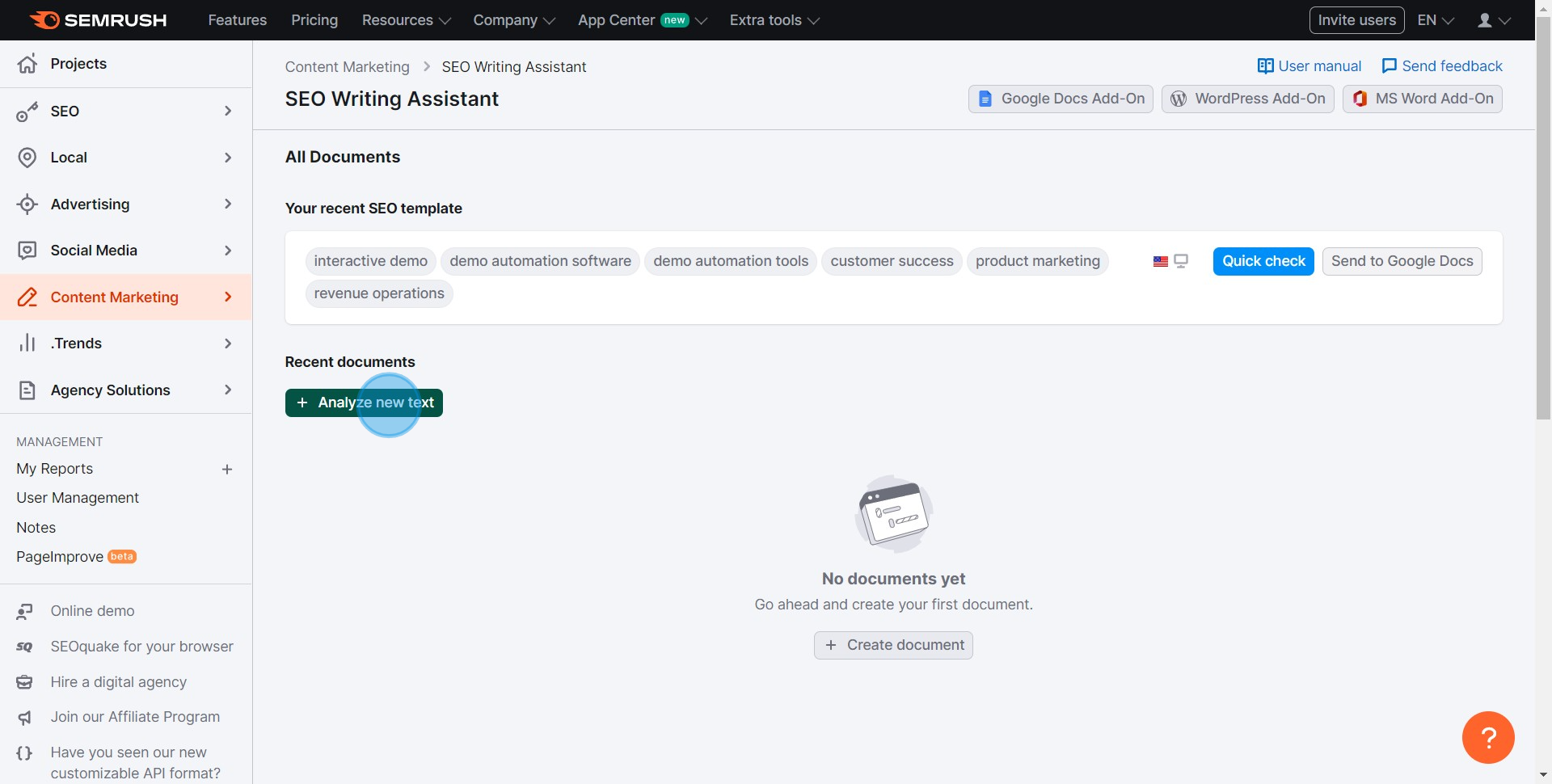
4. Type your text, or opt to import from the web
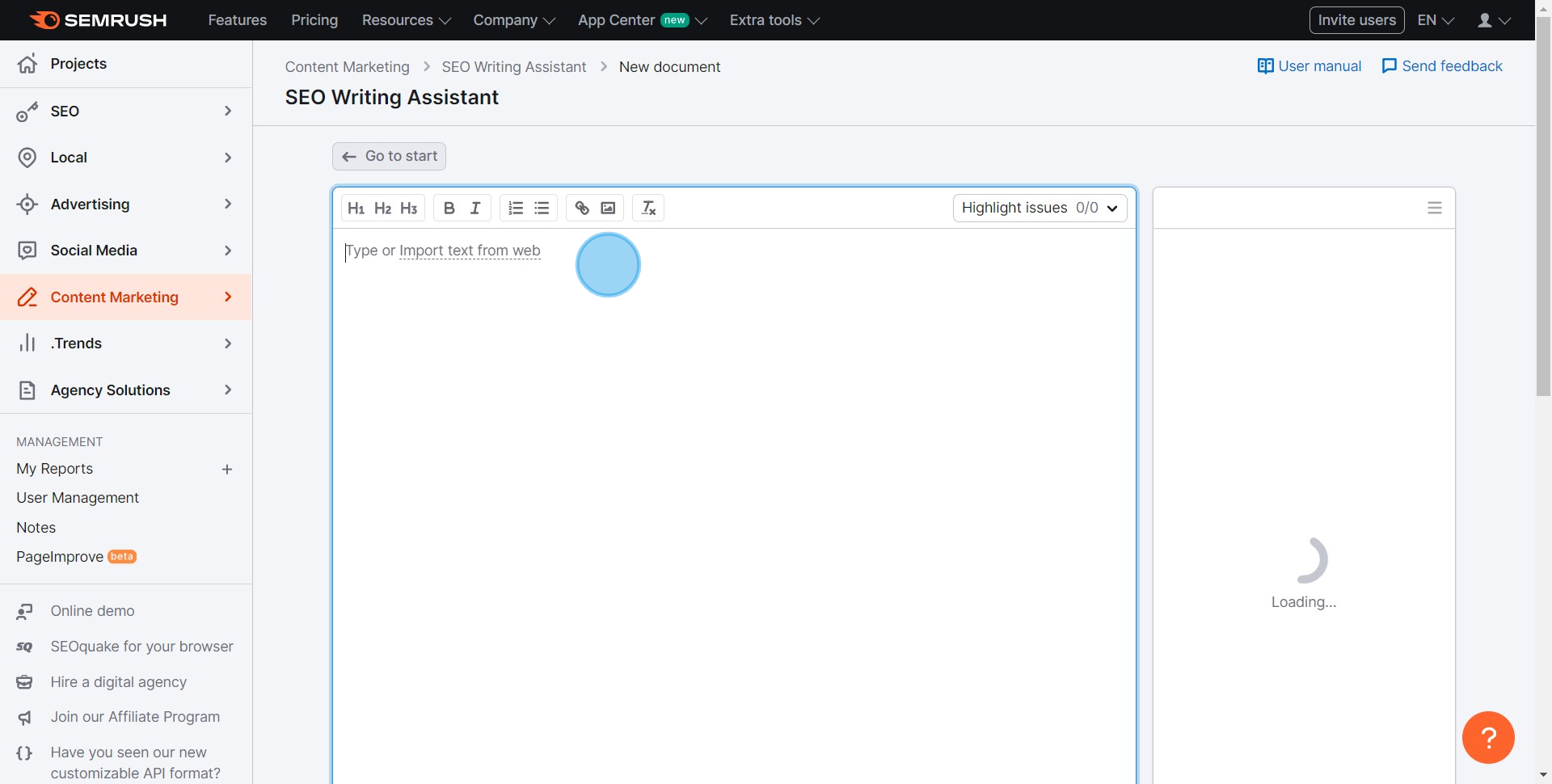
5. To import, click on the Import button
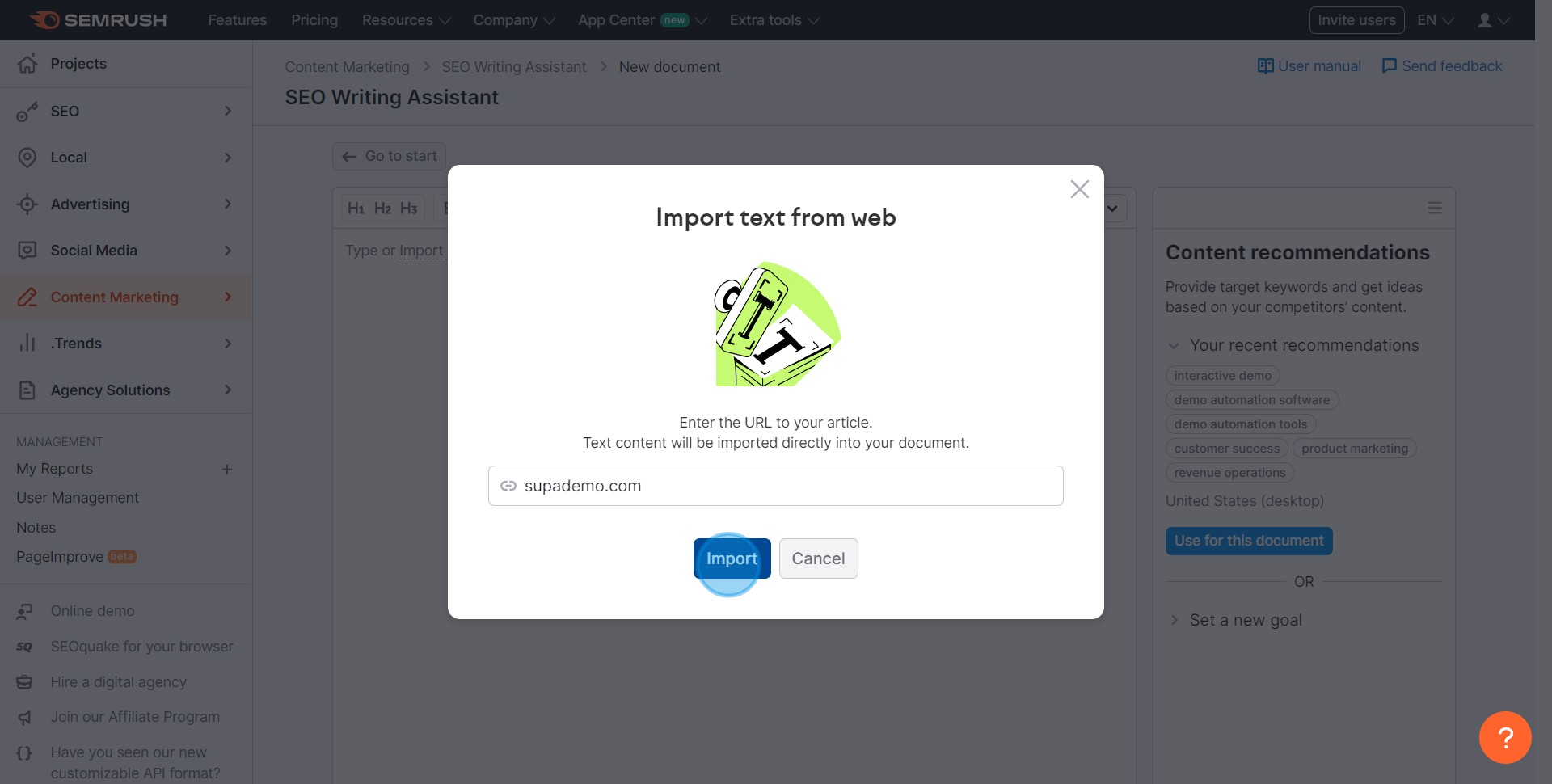
6. Then, select Import keywords
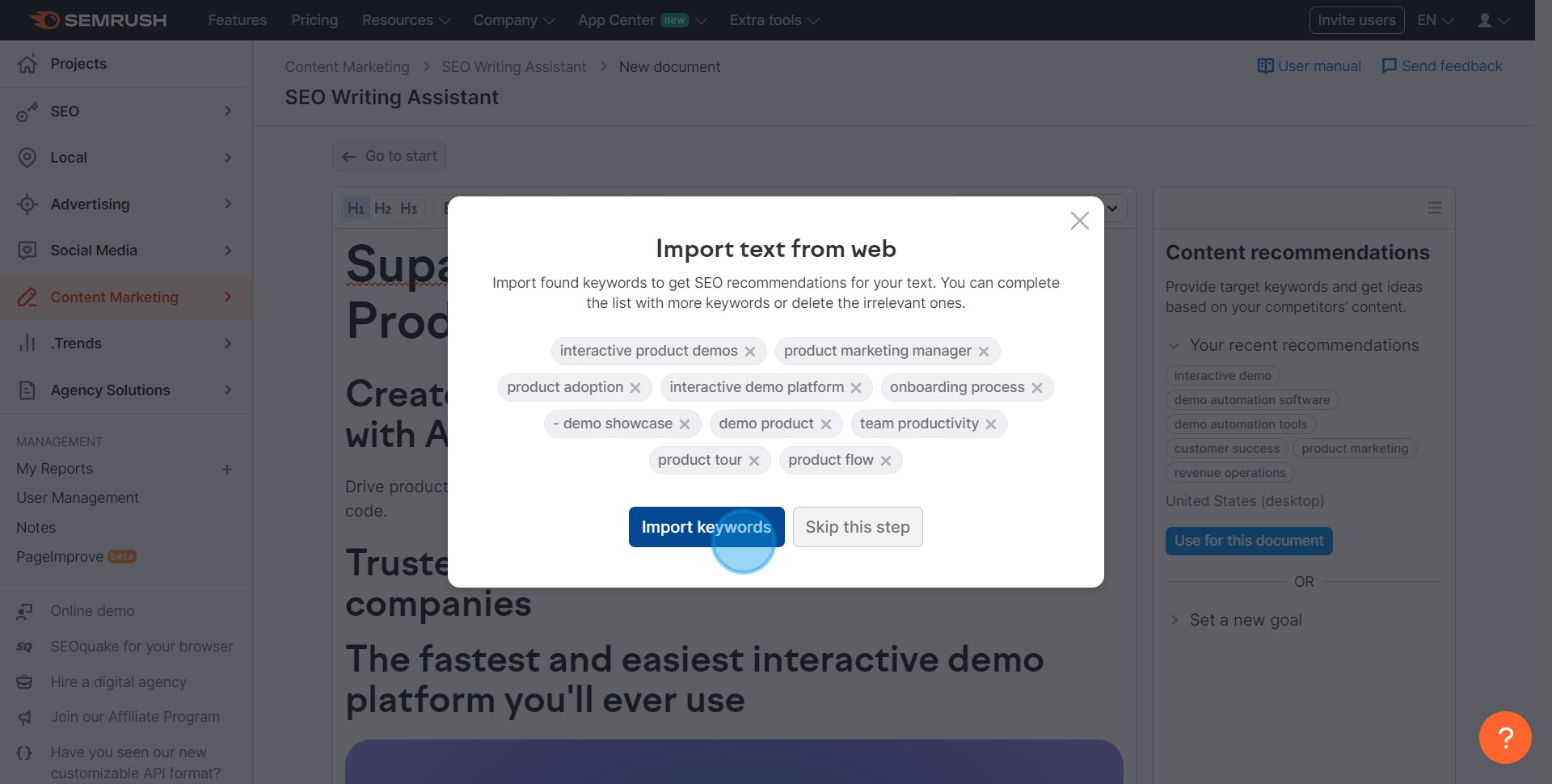
7. Feel free to get AI-based suggestions by clicking Ask AI
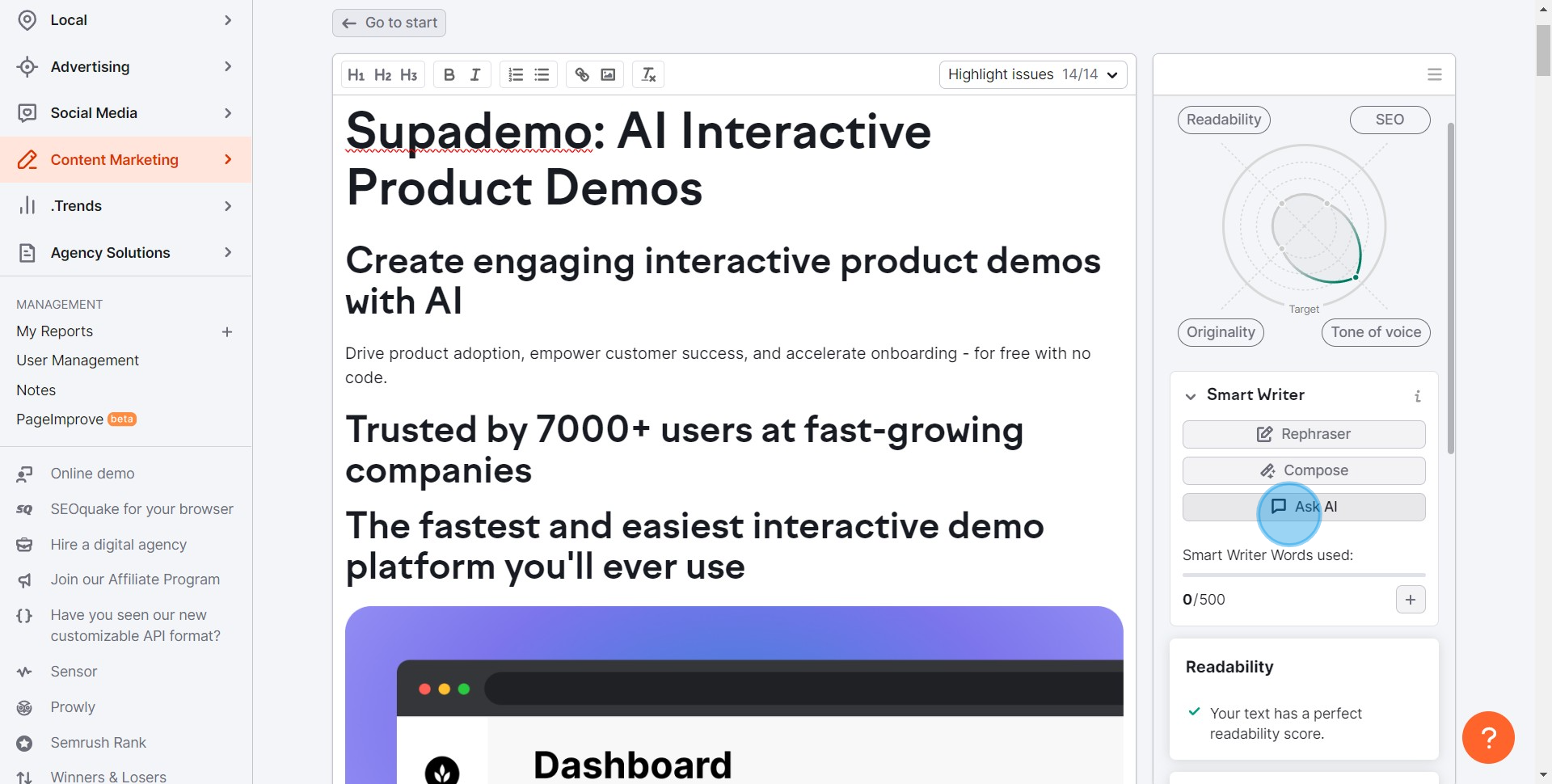
8. Enter your text and improvise with AI's help
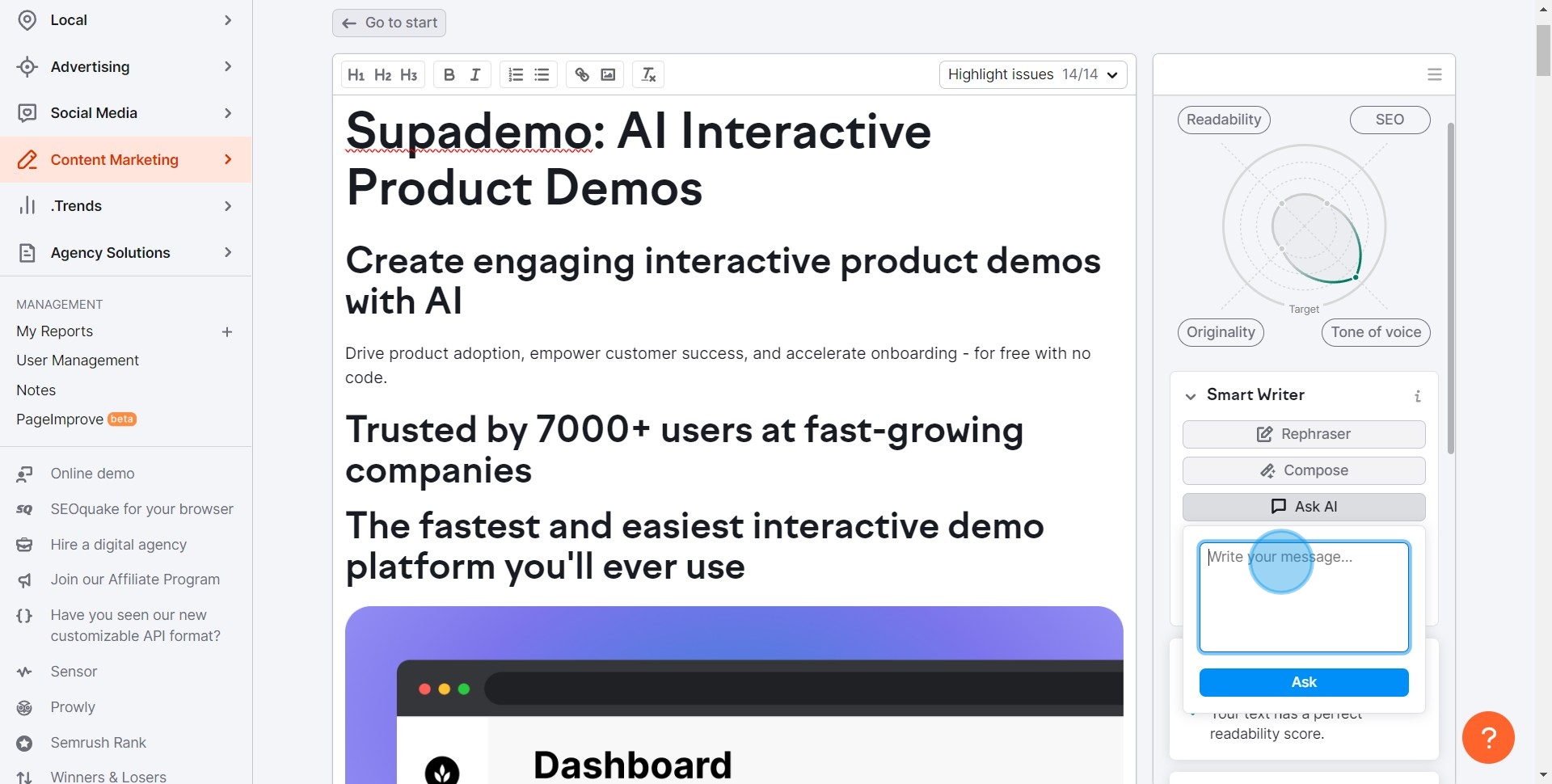
9. Finally, click Ask to send your text.
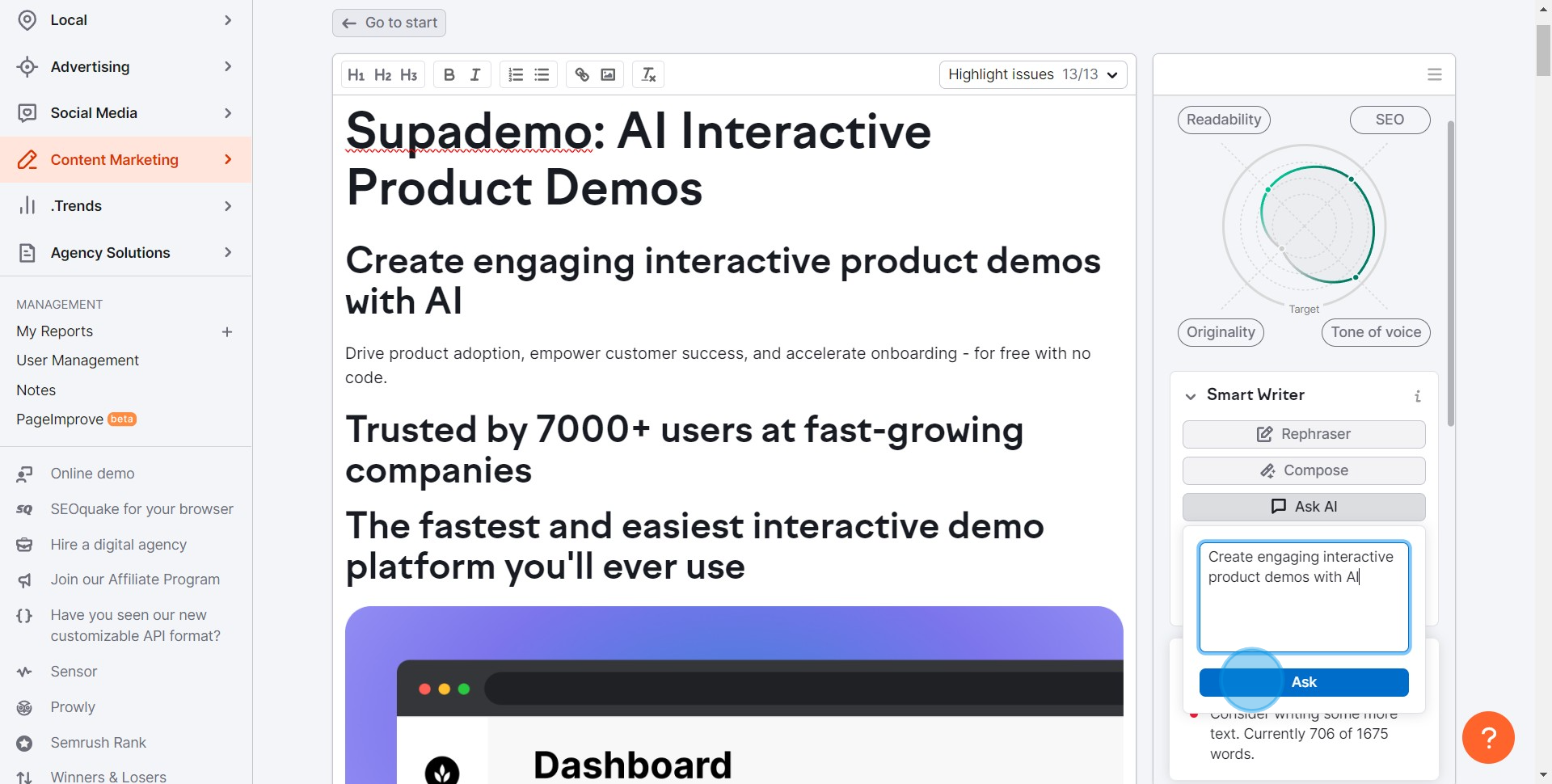
10. You can move your content to Google Docs

11. Wrap up by moving your document, select your preferred document to move.
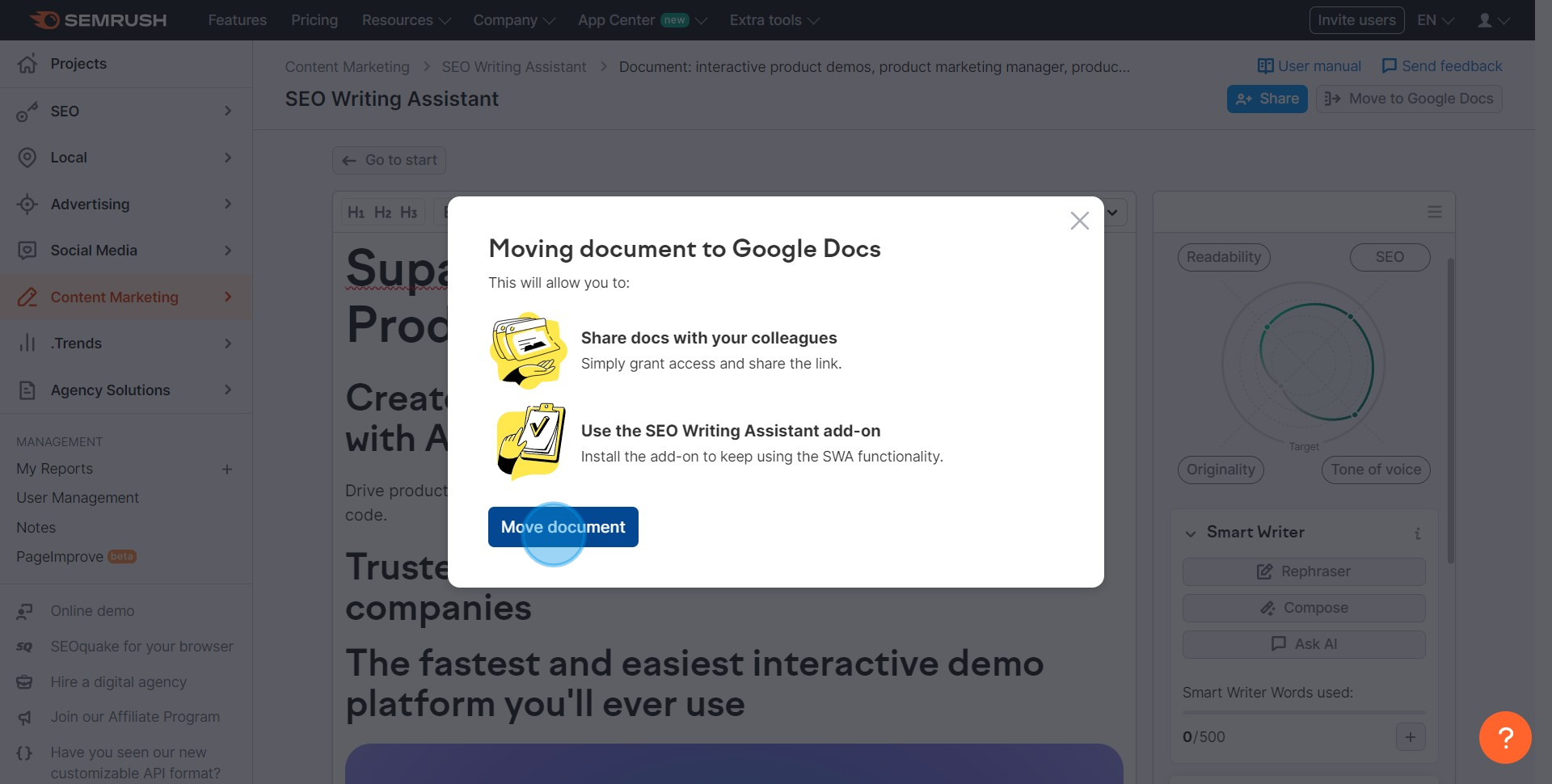
Common FAQs on SEMRush
Commonly asked questions about this topic.
How do I perform a site audit using SEMrush?
To perform a site audit, log in to your SEMrush account and go to the “Site Audit” tool under the “Site Audit” section. Click on “Create Project” and enter your website’s URL. Configure the audit settings, such as the crawl scope and frequency. SEMrush will crawl your website and analyze various aspects, including technical SEO, on-page SEO, and site health. Once the audit is complete, you’ll receive a detailed report highlighting issues, recommendations, and actionable insights to improve your website’s performance.
How do I use SEMrush to find keyword opportunities for my website?
To find keyword opportunities, use the “Keyword Magic Tool” or “Keyword Gap” tool. In the “Keyword Magic Tool,” enter a seed keyword to generate a list of related keywords with metrics like search volume, keyword difficulty, and CPC. Use these insights to discover high-potential keywords for your SEO strategy. The “Keyword Gap” tool allows you to compare your keyword profile with competitors and identify keyword opportunities that your competitors are targeting but you are not. This can help you expand your keyword strategy and improve your search engine rankings.
How can I track my website’s backlink profile with SEMrush?
To track your website’s backlink profile, use the “Backlink Analytics” tool. Enter your domain into the tool to get an overview of your backlink profile, including the total number of backlinks, referring domains, and anchor texts. You can also view the quality of the backlinks and any new or lost links. SEMrush provides metrics such as Domain Authority and Spam Score to help you assess the strength of your backlink profile and identify potential areas for improvement.
Create your own step-by-step demo
Scale up your training and product adoption with beautiful AI-powered interactive demos and guides. Create your first Supademo in seconds for free.
Nithil Shanmugam
Nithil is a startup-obsessed operator focused on growth, sales and marketing. He's passionate about wearing different hats across startups to deliver real value.
